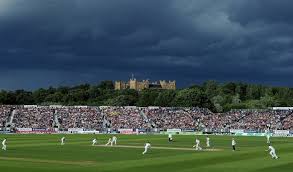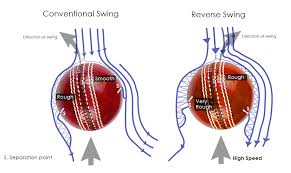On 18th January 2000, Who Wants To Be A Millionaire? featured a chap called Peter Lee (definitely not the former Lancashire and England bowler) who battled his way up to the £500,000 mark and then faced the final question which would make him a millionaire. The question was “Which county cricket side is based at Chester-Le-Street?” The options given were a) Warwickshire; b) Durham; c) Northants; and d) Leicestershire. He had used up all his lifelines, so it was down to his own geographical knowledge. Chris Tarrant, a cricket geek, clearly knew the answer. Any county cricket lover would have known the answer, but Mr. Lee did not. He had to give up and take the money. But if he’d ever shown any interest in county cricket, he would have doubled his money. His lack of interest in cricket cost him £500,000.

I suppose you could suggest that his geography teacher at school might not have been much good, or that he obviously hadn’t travelled around the British Isles very much, but most of all it was the lack of cricket in his life that cost him dear. This is something the Kent Cricket Heritage Trust is planning to do something about.
Sport in schools is usually thought of as playing football against your local rivals, or netball or athletics games, and sadly, very rarely cricket except in the private sector. But we would say that sport, which interests most children, could easily form part of the academic curriculum and make the learning of all sorts of basic skills much more interesting. Music is the same – I learnt very quickly where Memphis, Tennessee and most of the places on Route 66 were, because of the hit songs of my long distant youth. And that led me to an interest in seeing these places and learning more about the things that went on there.
Cricket in Kent may not be as rock’n’roll as Chuck Berry or the Rolling Stones, but think what lessons could be livened up by a little application of willow and leather. Mathematics, for a start – how do I work out batting averages, economy rates, and the like (we’ll leave out the Duckworth Lewis method, which is metaphysics rather than maths). Then there’s geography, which Peter Lee might have listened to more carefully if the lesson on the North-East of England had had more of a sporting context, physics – how does a bowler get the ball to reverse swing? How does a light meter work?, not to mention biology, life sciences, natural history and social history. All of these subjects could be enlivened through the medium of all sport, not just cricket. I learnt my way around Australia and India by following the itinerary of MCC tours in the newspapers, but I also remember how to measure the circumference of a cricket-ball or any other sphere thanks to a cricket-mad maths teacher when I was about twelve.

This is obviously an easy enough thing to write about, but a less easy one to put into practice, especially in Covid times. But assuming that the inoculation against the dreaded disease is operational by next season, and we can start to get back to some sort of normality, we at the Heritage Trust, in celebration of Kent CCC’s 150th year, would like to start talking to local educational establishments to see if there is any way we can fit cricket into their academic timetable, even if we can’t fit it into their sporting curriculum.
At the other end of the age scale, we also plan to increase our collection of sporting memories, whether on video or just audio. This is not just for the great stars of Kent cricket; it is to collect the memories of spectators, village cricketers and anybody who wants to share a Kent cricket memory with us. The more we have, the more we have to work with to build a really interesting story for the youngsters just starting out on their love of cricket. The memories/learning link is a strong one that makes a real difference to people’s lives.
The Heritage Trust was established first and foremost to look after and display our collections of Kent cricket memorabilia, but it also has as one of its main raisons d’être (a bit of French there, you notice) to “share the collections and knowledge of the stories of Kent cricket”. Sharing the knowledge is what school education is all about, and not merely about producing young people who will become rich and/or happy. Mr. Lee would have been even richer and happier if he had only known where Chester-Le-Street is.
Splendid. Found it most days. 😂Alan Wright. CEO Durham CCC in the Nineties.